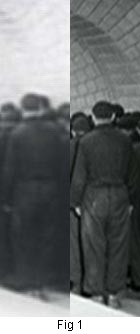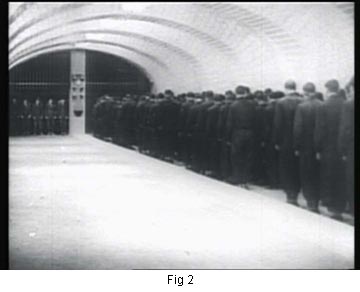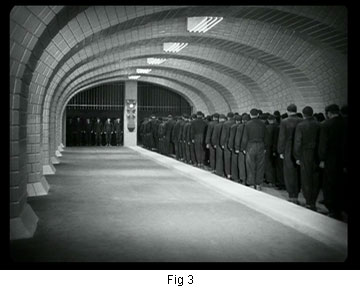 Just a couple of days after I purchased an Australian DVD release of the silent classic Metropolis, I read of a new, restored version on James Lilek’s glorious ‘The Bleat’. Taking mercy on the man (and as just a tiny downpayment on my appreciation of his world-beating writing), I used his link to purchase a copy from Amazon. Oh what a twit I am!
Just a couple of days after I purchased an Australian DVD release of the silent classic Metropolis, I read of a new, restored version on James Lilek’s glorious ‘The Bleat’. Taking mercy on the man (and as just a tiny downpayment on my appreciation of his world-beating writing), I used his link to purchase a copy from Amazon. Oh what a twit I am!
I had read that this was beautifully restored in Germany, so of course I went and bought the US version. The German version is PAL, and enjoys 576 lines of resolution. The US version is NTSC, and enjoys (hah!) just 480 lines, plus all the interlacing problems NTSC produces. I should have hit the UK or German versions of Amazon to make my purchase. Oh well.
Despite this silliness on my part, the Kino Video version of Metropolis is better than the local version in too many ways to fully specify. But here are a few of them. First, the local Force Video version comes from an NTSC video source anyway, so it suffers even more intractable interlacing problems (NTSC to PAL conversions, unless done very cleverly, result in the NTSC interlacing being spread over an even higher proportion of frames). Secondly, the Force Video version looks like it comes from about a tenth generation copy of the film.
  |
While here I will show you some differences between the single-frame quality, you can take my word for it that in addition to losses and confusion in the film’s structure, the Force Video version jitters around the frame in a truly off-putting way, and suffers much more brightness variation (yes, some remains in the restoration).
But it is in seeing what is going on that the restored Metropolis excels. Look at Figure 1. The detail on the left is from the Force version, that on the right is from the Kino version. Actually, that’s not quite right. As we shall see shortly, the Force version is so heavily cropped that details in the Kino version are quite a bit smaller. So to make the comparison more apt, I scaled up the right-hand detail in linear size by 26% so that there’d be a rough match. It’s actually a little sharper before the size increase. Remember, too, that even before this I scaled up the image from 480 to 540 pixels vertically (the PAL version was downsized from 576 to 540 — the relevance of 540 is that it gives the correct aspect ratio when the horizontal resolution is 720 pixels; 720*3/4=540).
Part of this might be due to the DVD encoding. The Kino version appears on a dual layer DVD and gets an average bit rate of 6.22 Mbps, and still well over 5 Mbps even after the audio tracks are subtracted. The Force version has to make do which what must be some kind of low-record for DVD encoding: just 2.8 Mbps (around 2.6 Mbps for video only) — indeed, this is the lowest rate for the feature of any disc in my collection. There really wasn’t any excuse for such a low bit rate, because of the 4.7GB capacity of a single layer disc, only 2.87GB has been used. The bit rate could easily have been bumped up by 50%.
Now Figures 2 and 3 are matching frames from the movie (near the start). The most obvious difference is in the brightness and contrast. To the extent that any detail remained in the Force version, it has been washed out by overexposure. Look at the overhead lights. You can count the fins on the Kino version, but they are mere indistinct blobs of light on the Force version.
Then there is the focus, which allows a huge amount of detail on the Kino version, almost none on the Force version. Count the bricks! See the dirt smudges on the overalls.
And there is the framing as well. A huge amount of the left and top of the frame has been chopped in the Force version. So much, that it looks like a different camera angle. Yet by showing the left hand side of the arch, the Kino version emphasises the mechanistic look of the workers, being cycled through the work/rest cycle as though mass, indistinguishable parts in a machine.
You won’t be disappointed with the Kino version (which uses the original score in decent Dolby Digital 5.1 sound). But if you are in a PAL country, get the PAL version which, I expect, will be even better.
WARNING: The Kino version of Metropolis is Region 1 encoded. The Force Video version will work in all Regions.
